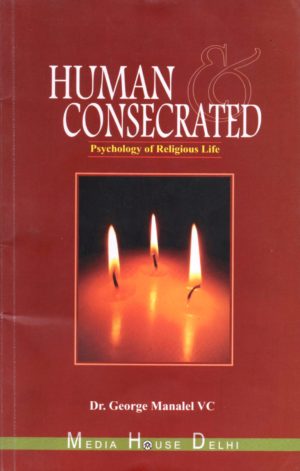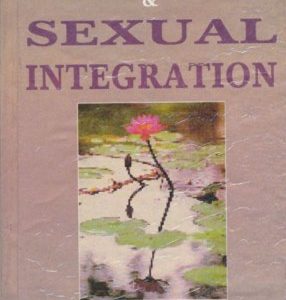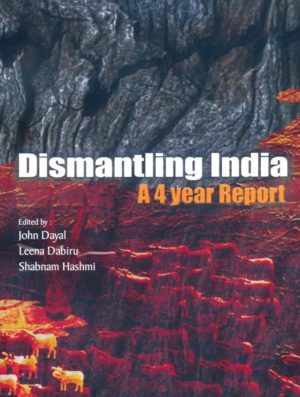Description
Let us know the Author Dr. Felix Podimattam OFM Cap.
Dr. Felix Podimattam is one of the best known Indian authors in the field of ethics and morality. He holds a Master’s degree in Political Science from the University of Mysore, a Licentiate degree in theology from Pontifical Gregorian University, Rome and a Doctoral degree in Moral Theology from the Alphonsian Academy, Rome. His doctoral thesis ‘The Relativity of Natural Law’ is acclaimed as exceptionally excellent. The thesis was guided by the eminent Moral Theologian, Bernard Haering, who influenced the renewal of Moral teachings of the Church during and after the Vatican II. Dr. Podimattam is resident professor at St. Francis Theological College, Kottayam and has been the founding member and first president of the Indian Moral Theologians Association. Most of his books, numbering over 120, are published by Media House, Delhi. Having gone through most of his books, let me highlight the most significant characteristics of his writings. First of all, he engages in a creative dialogue with other authors on every topic of discussion. Second, he tries to compare and integrate, as far as possible, the visions and views of other religions. Third, he holds a very positive attitude to life in general, especially to human body, sexuality, etc. Fourth, he is a keen observer of the socio-political and religious happenings in the society and responds to them immediately. His book on ‘Fast unto death’ during the upheaval of fisher people’s struggle in the eighties and his book on ‘Da Vinci Code’ a few years ago, where he gives a theological response to journalism with half-truths, are worth mentioning here. Fifth, he has taken keen interest on equal rights and dignity to women in the Church as well as in the society. In the context of widespread discrimination against women in the Church and society he published a six-volume work titled: ‘In praise of the woman’. Sixth, he holds on to the sacredness of life in all its forms and he has published books on topics like abortion, euthanasia, etc. Seventh, we find in his writings a harmonious blending of the traditional wisdom with its emphasis on fundamental Christian values as well as the findings of modern sciences like psychology, sociology, anthropology, etc, as well as the latest fruits of biblical exegesis.
The latest contribution of Dr. Podimattam, which may be acclaimed
The Making of a Masterpiece
The latest contribution of Dr. Podimattam, which may be acclaimed as his masterpiece, is: The Ten Commandments in the Law of Christ, a 20 volume work on the Decalogue. His vast knowledge on the subject gained through painstaking research, his teaching experience in various theological institutes stretching out over four decades and frank discussions with eminent thinkers have gone into this work. These books provide us with a re-interpretation of the commandments keeping in mind the genuine concerns of the people of God and at the same time remaining absolutely loyal to the teaching of Christ – “Christ did not come to abolish the law and the prophets, but to fulfil them”.
CONTENTS
INTRODUCTION
1. THE NATURE OF PSI OR ESP
2. HISTORICAL ASPECTS OF PSI OR ESP
2.1. PSI or ESP in the Past 4
2.2. The Background to Psychical Research 5
2.3. Foundation of the Society for Psychical Research
2.4. The Impact of PSI 11
3. PHILOSOPHICAL ASPECTS OF PSI OR ESP
4. THEOLOGICAL ASPECTS OF PSI OR ESP
4.1. ESP in the Bible
4.2. ESP in Church History
5. MORAL ASPECTS OF PSI OR ESP
5.1. General Considerations
5.2. Specific Considerations
6. PASTORAL ASPECTS OF PSI OR ESP
7. HYPOTHESES ABOUT PSI OR ESP
7.1. By Physical Scientists G. N. M
7.2. By a Biologist Professor Sir Alister Hardy.
7.3. By Psychologists
7.3.1. Sigmund Freud and Professor C. J. Jung
7.3.2. Professor Gardner Murphy
7.3.3. Dr R. H. Thouless
7.4. By Philosophers
7.4.1. Professor C. D. Broad.
7.4.2. Professor H. H. Pric
8. VARIOUS EXPERIENCES OF PSI OR ESP
8.1. Dreams and ESP
8.2. Meditation and Religious Ritual
8.3. Trances, Mediums, and Automatic Writing.
8.4. Hypnotic Trance
8.5. Drugs and ESP
8.6. Divination or ESP through Oracles
8.7. Miracles.
8.7.1. The Nature of Miracles.
8.7.2. The Possibility of Miracles.
8.7.3. The Rarity of Miracles.
8.7.4. The Ambiguity of Miraces
8.7.5. Can We Expect Miracles Today?
8.8. Apparitions and Revelations
8.8.1. Nature of Private Revelatins
8.8.2. The Manner of Revelations.
8.8.3. Attitude to be Taken towards Revelations
8.8.4. Rules for the Discernment of Revelation
8.9. Ecstasy
8.9.1. Meaningof the Term
8.9.2 Philosophicl Reflections
8.9.3 Theologicl Reflection
8.10. Speaking in Tongues.
8.11.Healing ..
8.12. Post-Deat Contact
8.13. Possession
8.14. Obsession
8.15. Other Sundry Experiences
8.15.1. Altered State of Conscousness
8.15-2. Amulets
8.15.3. Astral atalepsy
8.15.4. Astral Projection
8.15.5. Astral Trave
8.15.6. Astrology
8.15.7. Bi-Location
8.15.8. Clairaudience
8.15.9. Clairsentiene
8.15.10. Clairvoyance
8.15.11. Coincidenc
8.15.12. Cults
8.15.13. Curses
8.15.14. The Dak Side
8.15.15. Divination
8.15.16. Earthbound
8.15.17. Ghost
8.15.18. Haunting
8.15.19. Imitative Magic
8.15.20. Levitation
8.15.21. Omens
8.15.22. The Other Side
8.15.23. Palmistry
8.15.24. Psychokinesis.
8.15.25. Seance
8.15.26. Sorcery
8.15.27. Soulmae
8.15.28. Stigmaization
8.15.29. Talismans
8.15.30. Telepath
8.15.31. Third Ey
8.15.32. Tools of Protection
8.15.33. Witchcraft, Witchs and Warlocks
8.15.34. Yin and Yan
CONCLUSION
BIBLIOGRAPHY
END NOTES




Reviews
There are no reviews yet.